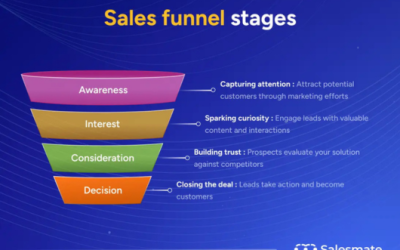Picture this: You have 3 salespeople who are following up with every lead. Each salesperson manages its lead follow-ups in its own way, so you do not know which leads are good and which ones are a dead end. Every now and then, your sales team closes a big sale, so you celebrate. However, that big sale does not make up for all the unqualified leads where so much time is wasted. This is becoming a problem, although you have great salespeople because it seems they are mostly talking to the wrong people. It is time to break the pattern, but you need a place to start.
We would like to explore 3 ways you can help your sales team attract and pursue better leads.
Manage your leads in one place
How many times have you asked your sales team to provide you with a report of their sales pipeline and each report is different? This makes it difficult for you to analyze because you will need to try to interpret and compare the reports. If you want to know how well each salesperson is performing and if they are following up with the right leads, your sales team needs to be tracking follow-up in a central place. That place is a CRM.
A CRM, like X2CRM, gives you the ability to run consistent and timely reports. As your sales team tracks their lead generation, follow-up, and conversion, you can track their progress including:
- Where they got the lead
- How much time do they spend on each lead
- When they are interacting with leads
- How many leads they are converting into customers by day, week, month, and so on
- Any red flags or obstacles that may be preventing them from closing more leads
If your sales team manages its own performance in its own way, you will not be able to help them close more sales and guide them to better leads. A CRM is a great tool to help you do this.
Evaluate your most qualified leads and customers
Speaking of red flags. If your sales team is meeting with too many unqualified leads, you need to identify the red flags. This can be down after you centralize your lead generation with a CRM. When you track lead generation and nurturing with a CRM, you can look for red flags that a lead is unqualified. Here are a couple of signs:
- Your sales team has left several voicemails or sent several emails without a response
- The lead is constantly worried about pricing
- The lead will not commit to taking the next step
- When the lead does commit, they are still hesitant
Unqualified leads are time wasters for your sales team. They lead salespeople to Follow Up Fatigue and choke out the time to pursue qualified leads. This is where your CRM can help you turn the tables.
Use your CRM to not only identify red flags but, more importantly, use it to identify your most qualified leads. When you evaluate your qualified leads, consider the following:
- What is their biggest need that you can solve?
- Why do they choose you over a competitor or another industry professional?
- Where do they network?
- What is their line of business or industry?
Understanding the buying behavior and characteristics of your most qualified leads will help your sales team know who to pursue, where to go, and what to do to close the sale with less effort.
Create an upside-down sales funnel with better content
As you understand the characteristics of your most qualified leads, you can use your CRM to create an upside-down sales funnel. An upside-down sales funnel has a narrow entrance into the funnel rather than a broad entrance. The intention of a narrow entrance is to attract the most qualified leads first so that there is no room for the unqualified lead to enter.
You can create an upside-down sales funnel by creating content including lead-generation forms, drip campaigns, and automation that speak directly to your most qualified leads. The characteristics that you glean from your CRM data will be your source for the content.
Conclusion
Helping your sales team to identify and nurture quality leads starts with a CRM. Your team needs a central location to manage leads and customers so you can work together as a team. Otherwise, everyone is on their own and the unqualified leads will continue to enter the funnel, waste your time, and prevent profitable growth.
If you would like to learn how a strategic CRM implementation can help you drive more sales with less, contact us. We invite you to schedule a demo of X2CRM so you can see how your business can thrive by using a CRM.





